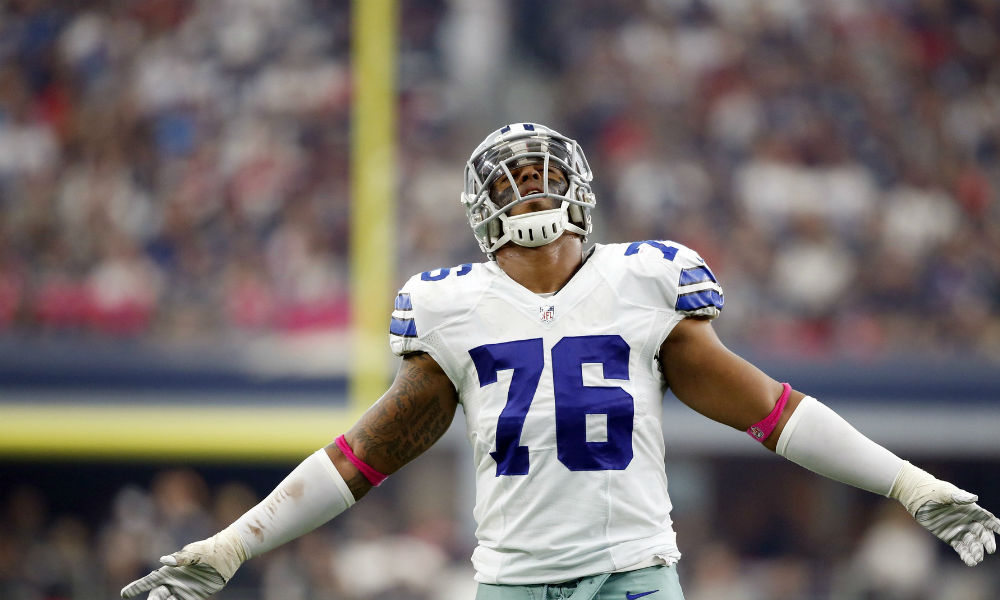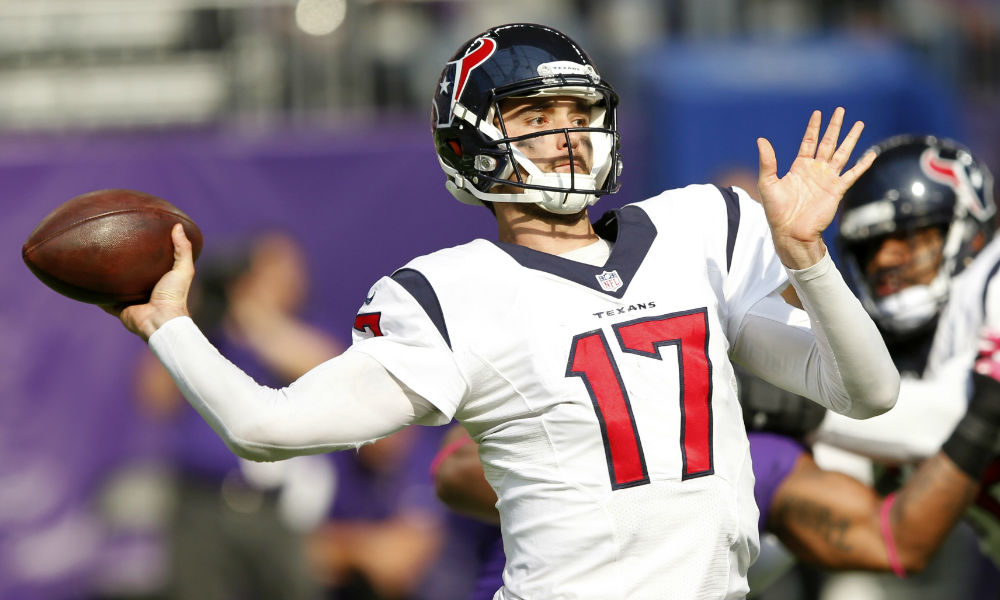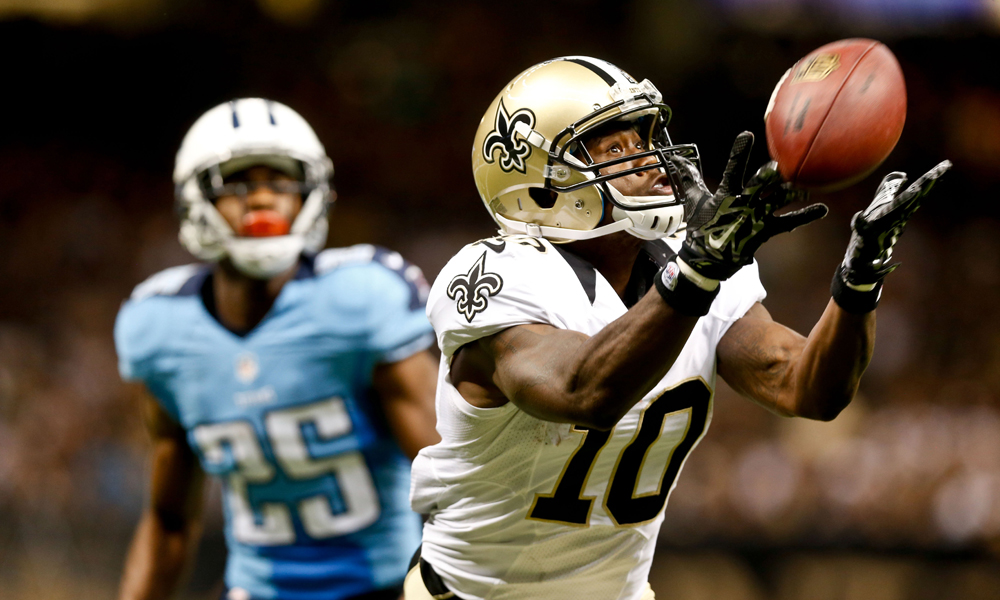News
Is the NFL Ready For a Return of the Running Game?
Running backs and running games are as important as they’ve been in a decade. Is the NFL headed for a change?
Is the NFL really a passing league?
We’ve heard that maxim (and some of us have preached it) for years. Quarterbacks like Tom Brady and Peyton Manning have led passing attacks which have assaulted record books and excited NFL fans and sponsors.
We’ve had physically dominant wide receivers like Randy Moss, Reggie Wayne and Calvin Johnson be the recipients of fantastic numbers, but we’ve also seen the proliferation of the system wide receivers—guys like Wes Welker, Julian Edelman and others—who benefit from wide open looks and yards after the catch. Meanwhile, we’ve also seen a rise in status from receiving tight ends like Jimmy Graham and Julius Thomas, who couldn’t block their way out of a crowded supermarket but are dominant matchup threats.
With all this mounting evidence, it’s possible to think that the NFL is headed toward some sort of idealized passing game that will remove the need for running backs forever.
Or, the opposite could be true.
See, one of my biggest paradigms when it comes to the NFL is that things are cyclical—revolutionary, not necessarily evolutionary. We’re not moving toward an ideal, we’re simply watching as old ideas get recycled time and again. For every high-flying, high-octane passing attack of this decade, one can go back and find one just like it from the 80’s and 90’s led by quarterbacks like Jim Kelly and Dan Fouts or coaches like Don Coryell and Sam Wyche.
Wherever the NFL is going, it’s been there before.
For that reason, we are likely headed toward a greater emphasis on the run game.
In fact, it’s already started.
Take a look at the Super Bowl from just a few months ago. Both teams—the Seattle Seahawks and New England Patriots—leaned on the running game in different ways. For the Seahawks No. 1 ranked rushing offense, Marshawn Lynch was the featured man on the offense even above quarterback Russell Wilson. For the Patriots, though their overall rushing attack was ranked only 18th on the season, backs like LeGarrette Blount and Jonas Gray showed that the rushing attack was a huge part of their success once the offensive line gelled midway through the season.
Expand that to the rest of the playoff field and teams like Dallas, Arizona, Pittsburgh, Cincinnati and Carolina all had strong rushing games.
Just outside of the playoff field, we saw teams like Philadelphia, Buffalo and New Orleans have successful rushing attacks in recent years and then reinvest in those rushing games in a big way this offseason, as much of the free agent speculation of March and April has revolved around names like C.J. Spiller (now in New Orleans with Mark Ingram), LeSean McCoy (now in Buffalo), DeMarco Murray (now in Philadelphia) and Adrian Peterson, who is likely headed elsewhere.
Philadelphia is a big piece of this puzzle as well. Head Coach Chip Kelly is often defined by the tempo of his offensive attack, but in the crudest, simplest terms, he’s just a run-first head coach who has elevated scheme above the players who run it. He spreads teams out, uses an incredible array of substitution packages and confuses teams to high heaven, but does little more than rush it right down their throat most of the time.
We spend so much time worried about who’s throwing the ball for the Eagles, we’ve missed the point: This is a run-first team in the biggest possible sense of the term. Kelly makes sure other teams dump their linebackers and extra linemen for nickel and dime backs, and then runs it right at them.
It’s a rope-a-dope aided by years of teams game planning and managing their rosters for the exact opposite.
It’s a copycat league.
The Seahawks, Eagles and others have gone against the grain investing big money in the running back position for a couple of years now and it’s suited them well. While they could certainly be seen as an outlier, teams with direct connections like the Jacksonville Jaguars and Atlanta Falcons are sure to copy much of what they’ve done well, while others will always look to borrow ideas in a league that does so every single year.
So, with the expanding cap opening up dollars, teams are spending on running backs in a big way.
Even backs like Reggie Bush (San Francisco), Ryan Mathews (Philadelphia), Bilal Powell (New York Jets), Shane Vereen (New York Giants) and Frank Gore (Indianapolis) made varying splashes in free agency as teams couldn’t help but reinforced their ability at a position most onlookers have been declaring dead and/or dying for the better part of a decade.
It’s only going to get worse.
This is a historically capable draft class at the running back position (and little elsewhere). Indeed, while there may only be a couple of quarterbacks, offensive and defensive lineman, tight ends or defensive backs worth grabbing as starting-caliber prospects, running back is one of the positions (along with receiver and edge rushers) that could see a number of rookie stars shine forth right away.
If not for a knee injury, Todd Gurley (Georgia) would be a Top 10 pick. He’s still likely to go in he first round. After him, Melvin Gordon (Wisconsin), Duke Johnson (Miami), Ameer Abdullah (Nebraska) and Jay Ajayi (Boise State) should all be picked within the first two or three rounds and expected to produce sooner rather than later.
Another trend helping in this regard is the lack of polished NFL-style quarterback prospects in recent years. In many ways, the “Golden Age” of quarterbacking we’ve been enjoying is coming to an end as so many teams lack even mediocre starters at the quarterback position. There’s is a supply/demand crisis which will only get worse as quarterbacks like Brady, Manning, Drew Brees, Tony Romo and Carson Palmer near ever closer to retirement and the amount of NFL-ready quarterbacks to replace them seems smaller and smaller with each draft class.
It also has a lot to do with how many of the top prospects lend themselves to conversations about possibly utilizing read-option looks. The option is not about the quarterback being a great runner or taking consistent hits. The option is about taking advantage of a numbers game by not blocking (rather, optioning) one of the defenders.
If a quarterback can simply be a competent runner and run the system well, it can turn the running back into that much more of a threat. Alfred Morris (Washington), Lynch, Gore and others have benefitted from this.
In a way, it’s a crutch as teams are hoping these quarterbacks turn into better pocket passers, but it’s also making due with the type of prospects college football has been sending up to them. One look at the college ranks shows that that bumper crop of spread-style quarterbacks isn’t changing anytime soon.
So, with a certain type of player coming out of college and a blueprint for using those players being showcased by successful teams in Philadelphia, Seattle, New England and elsewhere, it’s more than likely that the NFL could see a return to the run-heavy schemes and philosophies of the 90s.
The more things change in the NFL, the more they stay the same.
News
Buccaneers admit mistake, boot Aguayo
Source: Mike Florio of ProFootballTalk
Powered by WPeMatico
News
Did Bucs put too much pressure on Aguayo?
Source: Mike Florio of ProFootballTalk
Powered by WPeMatico
News
Broncos holding their breath on Derek Wolfe
Source: Mike Florio of ProFootballTalk
Powered by WPeMatico




